🌄 Climb Mount Teide at Sunrise
Discover the Magic of Spain’s Highest Peak (3,718 m)
There are few experiences in life as breathtaking as standing on the summit of Mount Teide, watching the sun rise over the Atlantic Ocean. At 3,718 meters, Teide is the highest peak in Spain and one of the most iconic volcanoes in the world.
Our Mount Teide Sunrise Hike is not just a tour — it’s an unforgettable adventure. Under the guidance of a professional high-altitude mountain guide, you’ll set out during the night, hiking under a blanket of stars. Step by step, as the sky slowly changes color, you’ll reach the summit just before sunrise. From there, you’ll witness a panoramic view that stretches across Tenerife, the Canary Islands, and the endless horizon of the Atlantic Ocean.
This is a once-in-a-lifetime journey that combines nature, challenge, and reward in one extraordinary experience.
🌌 Why Choose the Sunrise Hike?
- Climbing Mount Teide during the night makes this experience truly special. Here’s why:
- Starry Night Adventure: Begin your hike in the silence of the night, with the stars above and the volcanic landscape around you.
- Arrive at Sunrise: Time your arrival to the summit just before sunrise — a natural spectacle few people ever witness.
- Unforgettable Views: Watch as the first light of day paints the sky in shades of red, orange, and gold, with the Canary Islands visible in the distance.
- Exclusive Access: Daily summit permits are limited, making this a rare and privileged opportunity.
👥 Small Group, Big Experience
We believe the best adventures happen in small groups. That’s why our tours are designed to be intimate and personal, with a limited number of hikers. This ensures:
- More attention and support from your guide
- A safer, more enjoyable hike
- The chance to connect with fellow adventurers
- No crowds, no rush — just you, your group, and the mountain.
SEE MORE
🌄 Climb Mount Teide at Sunrise
Discover the Magic of Spain’s Highest Peak (3,718 m)
There are few experiences in life as breathtaking as standing on the summit of Mount Teide, watching the sun rise over the Atlantic Ocean. At 3,718 meters, Teide is the highest peak in Spain and one of the most iconic volcanoes in the world.
Our Mount Teide Sunrise Hike is not just a tour — it’s an unforgettable adventure. Under the guidance of a professional high-altitude mountain guide, you’ll set out during the night, hiking under a blanket of stars. Step by step, as the sky slowly changes color, you’ll reach the summit just before sunrise. From there, you’ll witness a panoramic view that stretches across Tenerife, the Canary Islands, and the endless horizon of the Atlantic Ocean.
This is a once-in-a-lifetime journey that combines nature, challenge, and reward in one extraordinary experience.
🌌 Why Choose the Sunrise Hike?
- Climbing Mount Teide during the night makes this experience truly special. Here’s why:
- Starry Night Adventure: Begin your hike in the silence of the night, with the stars above and the volcanic landscape around you.
- Arrive at Sunrise: Time your arrival to the summit just before sunrise — a natural spectacle few people ever witness.
- Unforgettable Views: Watch as the first light of day paints the sky in shades of red, orange, and gold, with the Canary Islands visible in the distance.
- Exclusive Access: Daily summit permits are limited, making this a rare and privileged opportunity.
👥 Small Group, Big Experience
We believe the best adventures happen in small groups. That’s why our tours are designed to be intimate and personal, with a limited number of hikers (max 10 hikers). This ensures:
- More attention and support from your guide
- A safer, more enjoyable hike
- The chance to connect with fellow adventurers
- No crowds, no rush — just you, your group, and the mountain.
🧭 Professional Guidance You Can Trust
Your safety and comfort are our top priority. Our tours are led by certified high-altitude mountain guides with years of experience. They will:
- Lead you safely through the night hike
- Set the right pace for the group
- Provide expert knowledge about Teide and its unique environment
- Make sure you reach the summit prepared and ready for sunrise
- You’ll feel supported every step of the way.
💶 Price & Inclusions
 Guided hike to the summit of Mount Teide
Guided hike to the summit of Mount Teide Special permit for the summit
Special permit for the summit Walking sticks
Walking sticks
 English, Spanish-speaking professional hiking guide
English, Spanish-speaking professional hiking guide
 Cablecar tickets (can be purchased on site)
Cablecar tickets (can be purchased on site) Transfer (in case you need it- just let us know)
Transfer (in case you need it- just let us know)
📩 Book Your Sunrise Hike Now
The number of summit permits for Mount Teide is strictly limited each day, which means places on this tour sell out quickly.
If you’ve ever dreamed of standing at the top of Spain, watching the sunrise from above the clouds, this is your chance.
👉 Contact us today to reserve your spot and be part of this extraordinary adventure.
Don’t wait — secure your place now and make your dream of climbing Mount Teide a reality.
Don't forget to bring with you for the climb:
• Wear suitable clothing: wind and rain jacket, gloves, hat
• Water (about 2 L / pers)
• Hiking boots
• Sandwich, fruit, dried fruit, cereal bar
• Sun protection
• To be friendly and have fun
Important information to know before:
- For climatic reasons climbing Teide can be canceled OR the cable car can be closed, in this case, the descent will be made on foot in the same way (about 3h).
- Hours may change. In the case of modification, you will be announced 24 h before the hike.
- Do not have altitude sickness, heart problems, or hypertension. The hike requires some prep and/or good athletic condition
- Have good equipment for hiking and cold.
5 reasons why you should hike with a guide:
1. A trip to the Summit of Teide entails a certain amount of risk.
2. At higher elevations, both the weather and the integrity of the terrain can change, which can turn an adventure into a risky situation. This is where climbing mount Teide with a professional guide comes into play.
3. A guide can transform an ordinary experience into an extraordinary one. Your hike will become a learning experience where the nature, history, and geology of the area come alive.
4. The guides (Alexis and Patrick) have a great deal of passion for what they do. They take tremendous delight in revealing things to you that you would never discover on your own.
You don’t have to worry about the “what ifs”. The guide service will have you prepared in the event a “what if” occurs.
5. Plus, the guides are certified in medical protocols and mountain rescue in the event something does occur.
El Teide-Spain's highest mountain:
2.jpg)
At 3.718 El Pico del Teide is Spains’s, the Atlantic Ocean, and Western Europe's (outside the Alps) highest peak above sea level.
Mount Teide is the third-highest volcano on the planet after Mauna Loa and Mauna Kea on the island of Hawaii. It is a stratovolcano, formed from layers of hardened lava and volcanic ash. It was declared as a UNESCO Heritage site in 2007 and is described by UNESCO and NASA as Earth's third-tallest volcanic structure.
El Teide is an active but dormant volcano that last erupted in 1909.
The Teide National Park where, where the volcano is located has an area of 18.900 hectares and has also been one of the Twelve Treasures of Spain. It is the Canary Islands and Spain's most visited National Park. The park includes many famous landscapes: Pico Viejothe Llano Ucanca, Siete Cañadas, Roques de García, La Fortaleza, Los Altos de Guajara, Narices del Teide, and Boca del Tauce.
Climbing mount Teide from Montaña Blanca:
1.jpg)
Good fitness is the key to climbing Teide. There are no technical difficulties but we require our team members to have mental determination and good physical conditioning.
The start of the El Teide climb is scheduled at 1 am or 2 am depending on the sunrise. In any case, you will be informed in time.
You will start the climb from the Montaña Blanca (2348m) trail for about 3.30 hrs to the Altavista Refuge, where you will take a short break.
You will continue climbing until La Rambleta via La Fortaleza on trail nr11 at about 1.30h, more or less depending on your pace, and arrive at the highest point, the Teide summit 3718m along Telesforo Bravo trail to observe this magnificent spectacle:
Sunrise and its explosions of color. You will be able to see the enormous shadow of the volcano that for a while reaches hundreds of km into the Atlantic Ocean. The volcano's shadow is the biggest cone-shaped shadow projected on the sea in the World. This shadow over the sea occurs twice a day, at sunrise and sunset.
Coming back: There's just one way down. You start your walk on the Telesforo Bravo trail until you reach the upper cable car station. For many hikers, getting down with the cable car is the right way to go. You can purchase on-site (cable car ticket: 21€) or in case it doesn't work, you need to be prepared for a 3-4 hour walk all the way back to the base of the Montaña Blanca.
Mount Teide hike can be done also during day time; just it needs more planning time.
This experience requires very good physical condition, motivation, and good equipment. We reach 3718 m oxygen is rarer and temperatures can sometimes be negative.
It is a real personal challenge but the reward is great and the overtaking of oneself gives an unforgettable satisfaction.
The night sky from an active volcano:

This guided tour's main goal is to reach the summit of the volcano. But we can not forget the fact that the National Park of El Teide is considered to be some of the best in the World for stargazing. Since Tenerife is so isolated, it is the perfect location for stargazing. Seeing the stars on Mount Teide is made easier because of the lack of light pollution from the nearby areas.
The Teide National Park is a great setting and one of the few places that offer the chance to see the night sky in all of its glory due to its altitude, climate, clear skies, and proximity to the equator. From the volcano, you will be able to see 83 of 88 constellations.
El Teide is rated worldwide in the top 5 places to stargaze. In fact, since 2014, the sky of the Teide National Park is recognized as a “Starlight Destination”.
What if Spain's highest mountain sounds too difficult?
Generally speaking, reaching the mount Teide summit is something every hiker wants to achieve; it's the most popular destination.
But for many, the highest mountain of the Canary Islands is not the best choice. A steep slope over 3.000 meters with a strong wind in the last section, is hard to conquer.
There are many great hiking routes in the National Park, which don't take as long but give the satisfaction of hiking on a volcano.
Pico Viejo-the second highest mountain
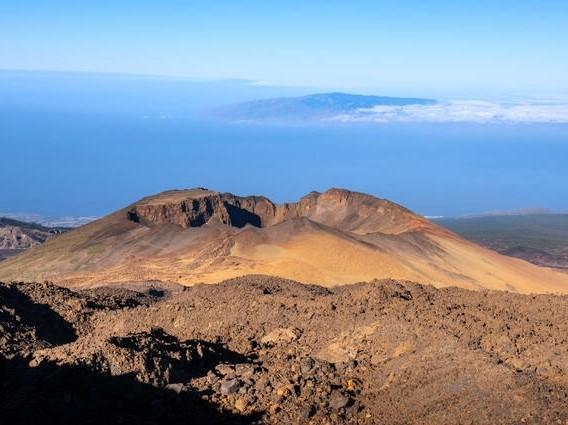
One of these trails, is the Pico Viejo or as locals mention it: Old Peak.
At an altitude of 3.135m, it is the second-highest mountain in Tenerife and the Canary Islands. Here took place the last eruption in the Teide National Park back in 1798.
The hike starts on La Rambleta and leads to the summit of the volcano. Pico Viejo is overlooked by most travelers because everyone is looking to reach Spain's highest peak but those who climbed it, rate this as more impressive than Pico del Teide.
Altos de Guajara-the third highest mountain
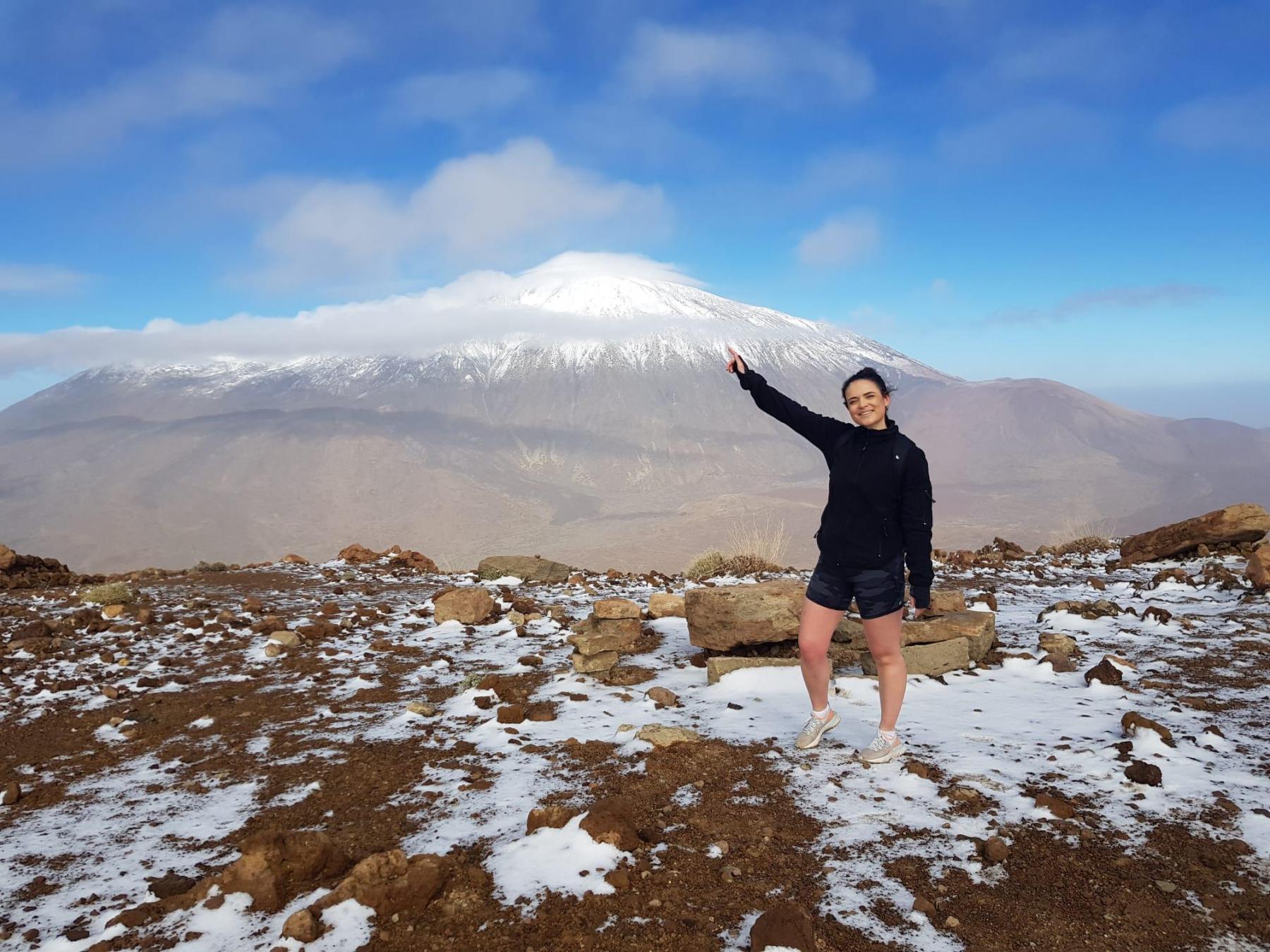
Another great hike in the park is reaching Altos de Guajara. This is recommended for those who are looking for something more challenging than a regular hike but still find the Top of El Teide too difficult.
This is the third-highest peak of the park at an altitude of 2715m. From there, you will get the best view of the top of El Teide. On a clear day, you will be able to see, not just the highest peak of Spain but also three other islands, La Gomera, La Palma, and Gran Canaria.
Stargazing-a guided tour in the night
.jpg)
And for those looking for an easy walk but still desire to be part of the greatness offered by El Teide, the best way is to go on a stargazing hiking tour. Hiking at night you gain new perspectives while escaping crowds. At this time of the day, Teide reveals its true greatness.
The Canary Islands are one of the places with the best reputation for astronomical observation, the Teide is one of the most privileged one. The volcano is far removed from any large city, meaning that the skies above it are perfect for viewing planets, stars, and satellites.
Although this tour can be done all year long, August is the most recommended. Just don't forget warm clothes and a down jacket as temperatures can drop.
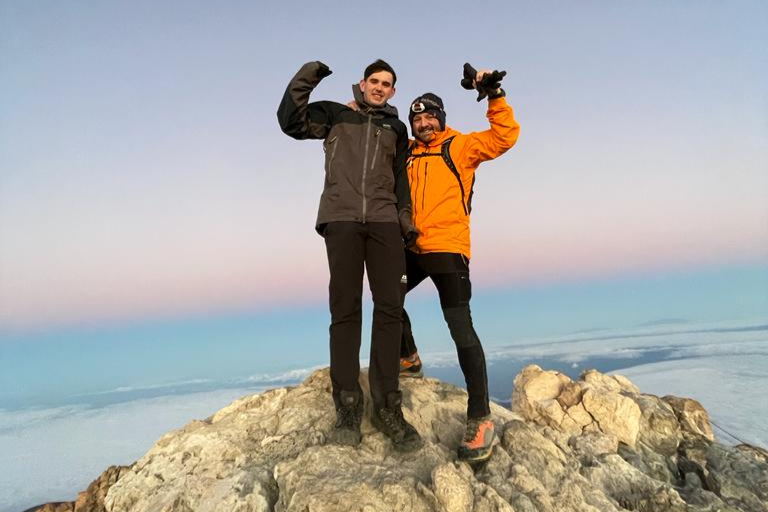
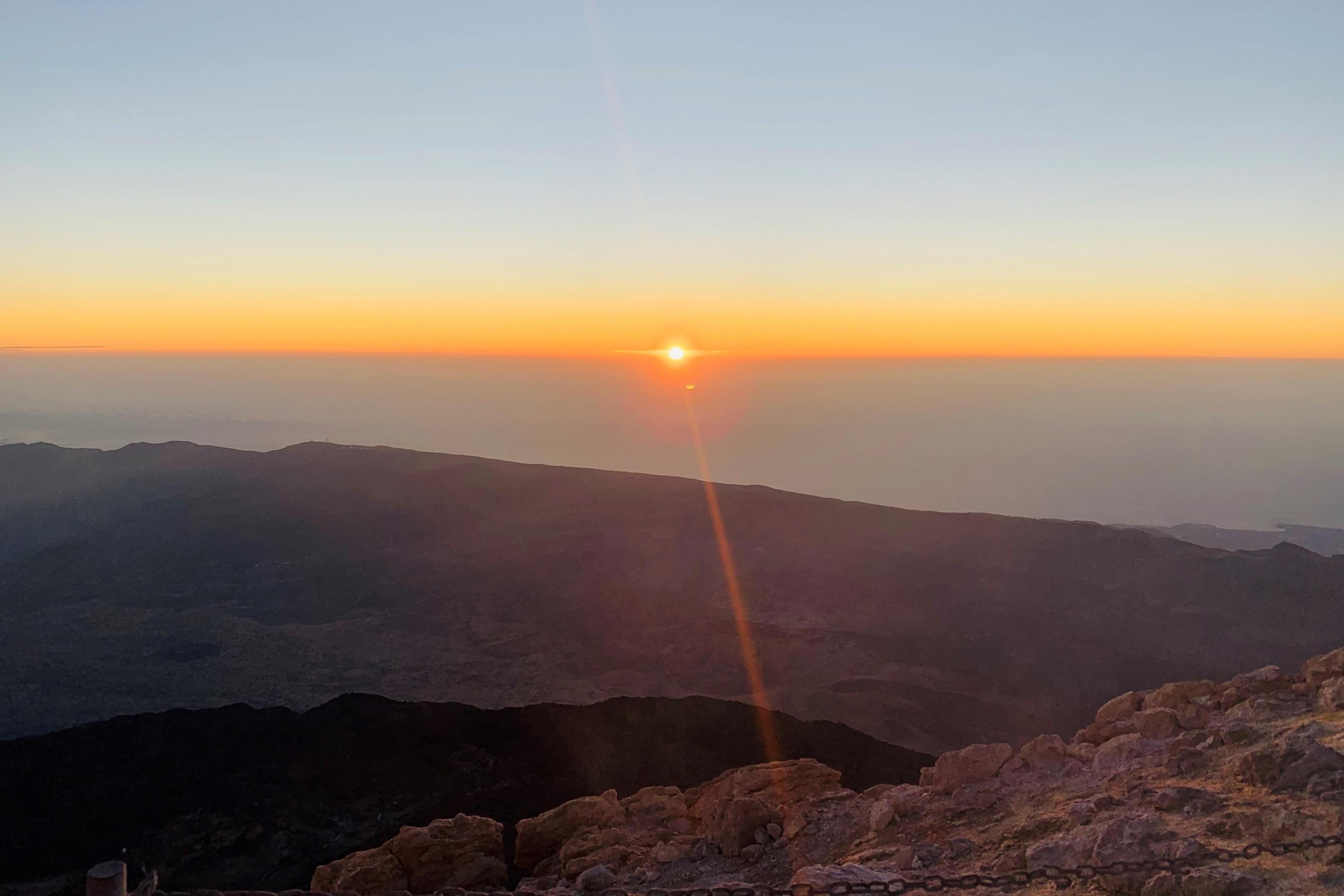
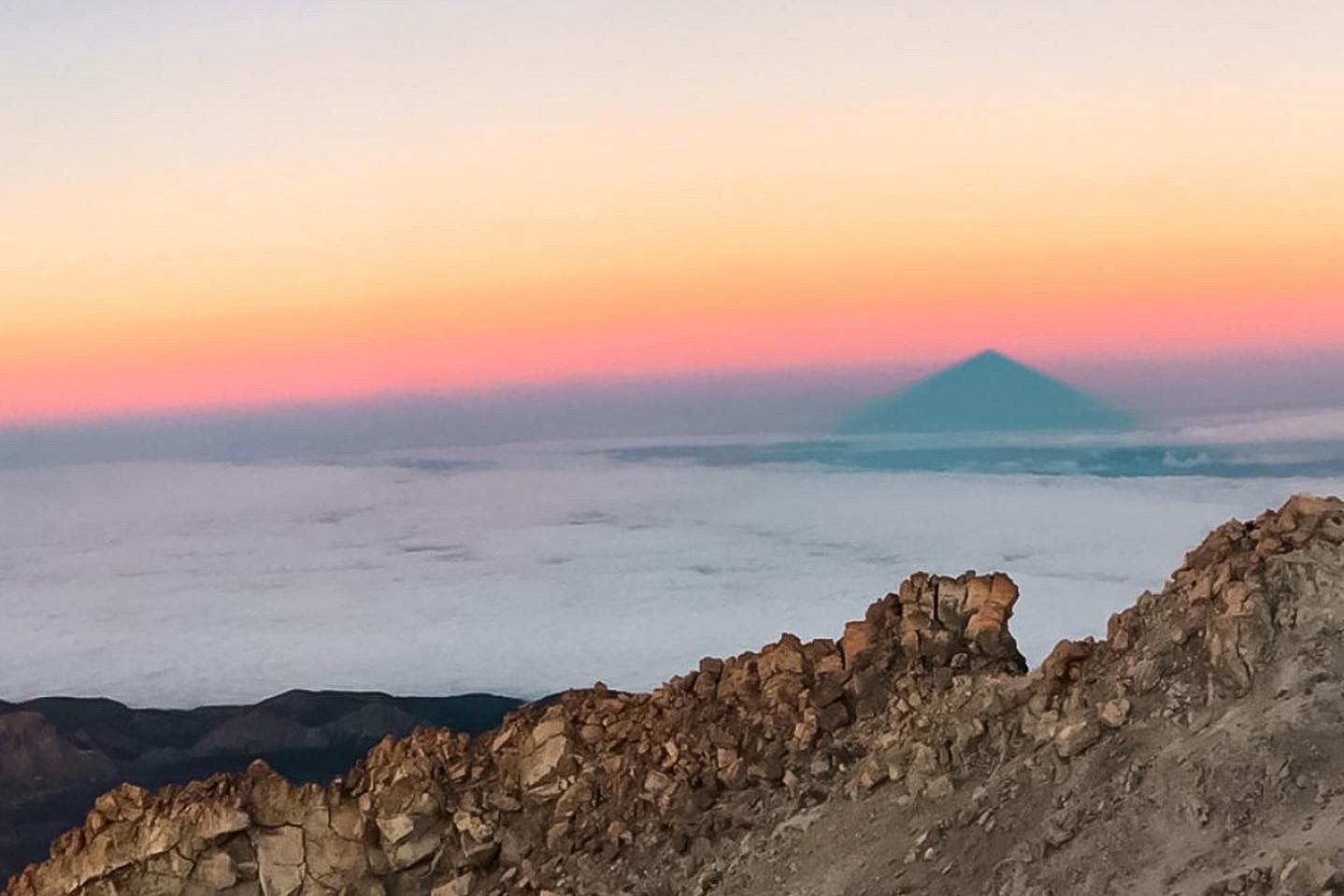
2.jpg)
1.jpg)



.jpg)